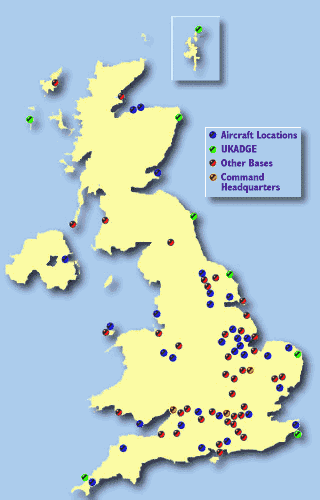







The Royal Air Force was formed on 01 April 1918 from the Royal Flying Corps and Royal Naval Air Service. RAF Bomber Command with HQ at High Wycombe was responsible for all light, medium and heavy bomber units. Working on the maxim that "The bomber will always get through", early RAF tactics dictated that a formation of bombers could defend themselves in daylight against enemy fighter attack. During the Second World War, the Bomber Command was the only way for British power to be brought directly to bear on Germany. After the defeat of the Luftwaffe by Fighter Command during the Battle of Britain, the Allied air force turned its attention towards Germany. Bomber Command pursued a strategic bombing campaign directed by Air Chief Marshal Sir Arthur ["Bomber"] Harris from his headquarters at High Wycombe. Unacceptable losses early in the war had resulted in RAF opting for a policy of night-bombing to increase the bombers chances against German fighters. Due to the difficulties associated with identifying precise targets at night, Bomber Command concentrated on area, as opposed to precision bombing, when striking at German targets.
Bomber Command and Fighter Command were merged into today's RAF Strike Command, headquartered at RAF High Wycombe with under its command based all over the world. Strike Command's No.1 Group at RAF Benson, Oxfordshire, controls the RAF strike/attack force, including the Panavia Tornado.
Air power remains a fundamental component of warfighting capability, complementing maritime and ground forces, and providing an offensive capability in its own right which will be enhanced by the increasing precision of air-delivered weapons. It has also proved its utility in non-warfighting operations, including the enforcement of no-fly zones and humanitarian deployments.
Under the July 1998 Strategic Defense Review twelve Tornado GR1s will be removed from the front line, a measure also necessary to enable the GR1/4 force to reach its out of service date, together with nine Harriers, thirteen Tornado F3 and two Jaguars. These reductions will result in the disbandment of one F3 and one GR1 squadron. It is anticipated that the Tornado GR1/4 will lose its anti-shipping role, but this does not imply any further reduction in airframe numbers.
Eurofighter remains the cornerstone of the RAF's future equipment program, and the UK Government plans to purchase 232 of the aircraft. Studies continue into a Future Offensive Air System to replace the Tornado GR4 in about twenty years' time. It is planned that the RAF will share with the RN the operation of a single aircraft (the Future Carrier Borne Aircraft) to replace the Sea Harrier and Harrier GR7, for which the Joint Strike Fighter will be a strong contender.

